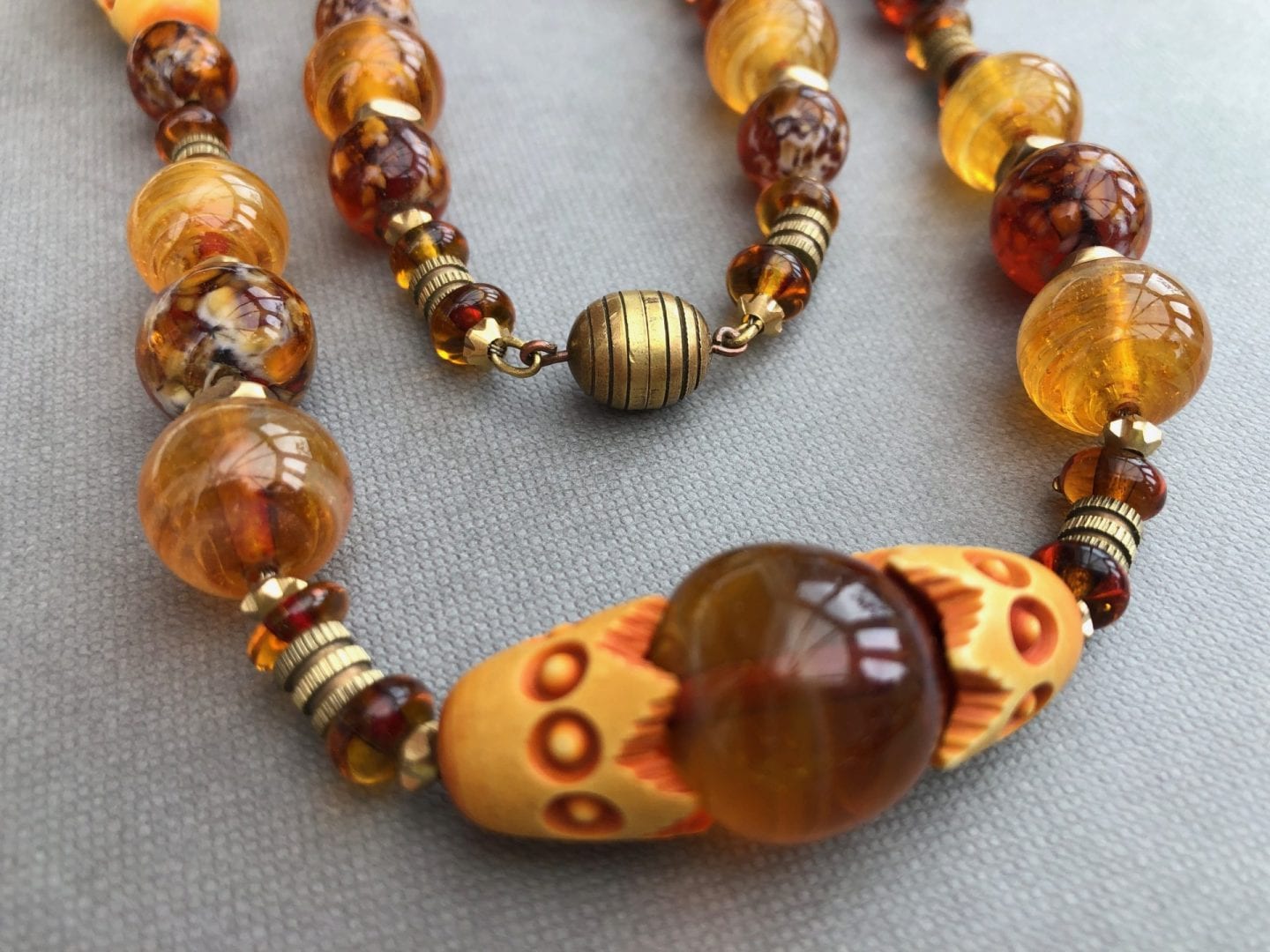A re-appraisal of the Louis Rousselet jewellery
Louis Rousselet (1892-1980) was born in Paris and was introduced to jewellery design and manufacture from early in his life. He was apprenticed to M. Rousseau at the young age of eight and was taught the skills needed for the manufacture of lampwork beads.
Technique
Lampworking is a type of glasswork in which a torch or lamp is used to melt the glass. Once in a molten state, the glass is formed by blowing and shaping with tools and hand movements. It is also known as flameworking or torchworking. We know that lampworking became widely practiced in Murano, Italy in the 14th century. The beads are made by melting narrow rods of glass by hand over an open flame. The glass is wrapped around a thin metal rod (a mandrel), which later becomes the hole through the bead. Lampworking is used to create artwork, including beads, figurines, marbles and much more. Many effects can be achieved through using various colours of glass and various techniques. The technique became popular in France, particularly for making paper weights.
Composition
His apprenticeship gave Louis Rousselet a good grounding and the skills necessary for his future design and manufacture of his very distinctive style of jewellery. His skills with glass would be utilised in his manufacture of galalith beads which were often plain or carved as well as his imitation pearls – glass beads coated externally with essence d’Orient – a fish scale compound.
Rousselet beads were all hand worked and polished. There was a wide variety of colours and style of beads: foiled, iridescent, leaves, lampworked multicoloured swirls, all produced in the same way for fifty years.
The beads were strung on chain, but in order to separate the beads he used a variety of metal spacers, which as a whole are unique to his jewellery.
History
In 1922, in Ménilmontant, Paris’s industrial heartland at this time, Rousselet set up shop and began manufacturing glass and Galalith beads and his imitation pearls. Business boomed and his firm was a major source of handmade beads worldwide, employing nearly 800 workers over the years. This is particularly interesting as training workers to the high level of skill needed within the Rousselet workshop took many years and involved considerable investment.
Louis Rousselet was joined in the business by his daughter, Denise. She designed occasional collections for her father from 1943. In 1965, Denise took over the exclusive design duties. Also, in 1960 she opened a small shop named Jeanne Danjou (her mother’s name was Jeanne). This was at the ‘Ile de la Cite’ (the Parisian isle on the Seine connected by the ancient Pont Neuf bridge and home to Notre Dame cathedral), where she sold Rousselet beads separately.
Marks
The majority of Louis Rousselet jewellery had swing tags on them. Some screw earrings have the initials LR on the back of the screw fitting or sometimes on a clasp. The majority of the beaded necklaces were strung on a fine chain and the screw barrel shape clasps often have ‘Made in France’ on them. There were a range of different shape barrel clasps that were used which helps in the identification of a Louis Rousselet necklace.
Manufacturing came to an end when the last trained worker retired in 1975.
Jewels Past has championed the work of Louis Rousselet and has a large stock of both necklaces and earrings. Please check out the website to see examples or contact Mags for further information on stock enquiries.


